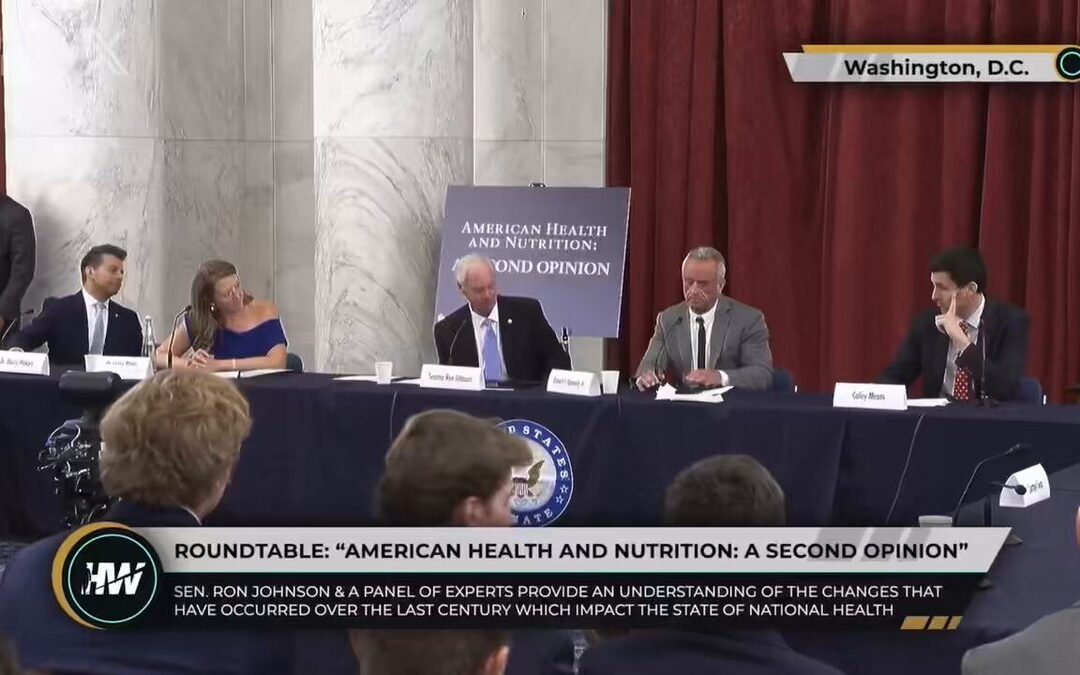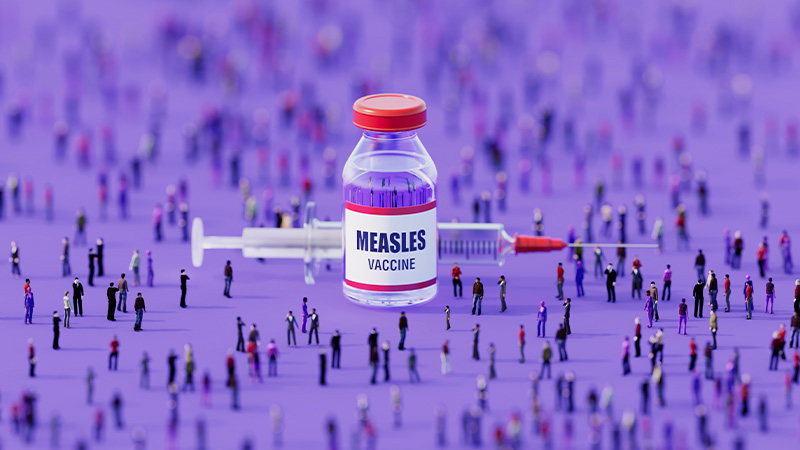Image Credit: Rebecca Noble / Stringer / Getty Images
Robert F. Kennedy Junior’s decision to retire and endorse Donald Trump has electrified a presidential race that was hardly lacking in excitement. Donald Trump had already come millimetres from having his head blown off, and Joe Biden was deposed in a carefully orchestrated palace coup, to make way for Kamala Harris. This has been a campaign of shocks and firsts, and now we can add another first to that list: a member of the Kennedy family supporting a Republican ticket.
In his announcement on Friday, before he joined Trump on stage in Arizona, Kennedy said that he would work with the Trump administration to “make America healthy again.” He described watching a generation of children grow up “damaged” as a result of poor diet and environmental pollution, and said that four more years of Democratic rule will “complete the consolidation of corporate and neocon power, and our children will be the ones that suffer most.”
“For 19 years I prayed, every morning, that God would put me in a position to end this calamity. The chronic-disease crisis was one of my primary reasons for running for president, along with ending the censorship and the Ukraine war.”
Now Kennedy is in a position to do that, and Trump has confirmed that he will head a task-force to investigate, and hopefully solve, America’s unprecedented health crisis.
The prevalence of obesity, diabetes, autism and AHDH, cancer, auto-immune conditions, infertility and reproductive issues, and neurodegenerative diseases like Alzheimer’s and Parkinson’s is exploding across the Western world, but especially in America, which leads the world, or once did, in virtually every single metric of ill health you could care to name. Over 40% of adults in the US are now classified as obese, and 1 in 36 American children have an autism-spectrum disorder.
On Friday, Kennedy identified two major contributors to this health crisis: ultra-processed food and toxic endocrine-disrupting chemicals. These are things Kennedy has talked about, at length, for years—decades, actually—including in the 2022 Tucker Carlson documentary The End of Men, which I’m proud to say I featured in prominently, alongside him.
The harmful effects of ultra-processed food and endocrine-disruptors are no longer fringe topics for discussion, but you may still be confused or unsure about what they are and why they’re bad. That’s where I come in. I’ve not been writing about these things for quite as long as RFK Jr. has, but I have been raising awareness about them for the last four years, including in my book The Eggs Benedict Option and my various media and podcast appearances.
On Saturday, I told you everything you need to know to understand what ultra-processed food is and why it’s so bad. Today, I’ll be telling you about endocrine disruptors.
These two primers can be shared with family and friends to help educate them and give them an incentive to improve their health by reducing their dependence on and exposure to ultra-processed foods and toxic chemicals.
WHAT ARE ENDOCRINE DISRUPTORS?
Worry about endocrine disruptors is a relatively new thing. The first use of the term appears to date to 1991, and one of the earliest uses in the scientific literature was in a paper published in the journal Environmental Health Perspectives, two years later. In 2013, the World Health Organisation and the United Nations released a detailed report on endocrine disruptors that called for more research into their effects.
So what are endocrine disruptors?
In simple terms, endocrine disruptors are substances that can interfere with the body’s hormonal (endocrine) system, in a variety of different ways, from mimicking the body’s hormones, to preventing them from working properly or even disabling them.
Hormones govern more or less every single process in the human body, which means, worryingly, that endocrine-disruptors can affect—well, more or less every single process in the human body. There’s been a lot of focus in recent years on endocrine disruptors and sexual health, but as well as causing reduced fertility, genital deformations and demasculinisation, endocrine disruptors have been linked to altered immune function, cancers, diabetes, obesity, respiratory problems and neurological disabilities. Again, like with ultra-processed food, we’re finding out that these nasty chemicals seem to be one of the principal causes of all the prevailing chronic diseases of modernity.
Endocrine disruptors have been around for as long as humans have been around. There are lots of natural substances, mainly plant substances, that can interfere with or mimic bodily hormones. Soy, for example, contains natural endocrine-disrupting compounds. For thousands of years, in the Far East, Buddhist monks have consumed unfermented soy because it dampens their libido and helps them extinguish their worldly desires, which is a prerequisite for achieving enlightenment and Nirvana.
Soy does this because it contains phytoestrogens—literally, plant versions of the sex hormone estrogen—that alter the body’s natural testosterone-to-estrogen ratio, which governs sexual differentiation. Men have more testosterone than estrogen, and for women it’s the other way round. Alteration of that sex-specific ratio can affect everything from mood and libido to growth of the sexual organs, depending on the time and extent of the alteration. Exposure to endocrine disruptors during pregnancy can be absolutely devastating for the developing fetus, causing lifelong changes, as I’ll explain a little later.
Of course, Buddhist monks who were doing this didn’t know anything about phytoestrogens. They were simply working on the basis of observed cause and effect. Eat unfermented soy: no desire for sex, or anything else for that matter.
Another plant that was used medicinally in a similar way was hops, which are used to preserve beer and also contain powerful phytoestrogens. For centuries hops were used to treat women’s problems, including hot flushes and other symptoms of the menopause.
Natural endocrine disruptors are important, especially when you’re considering the effects of diet on health. The presence of large quantities of natural estrogens in foods like soy is one of the many reasons plant-based diets, especially vegan diets, are a bad idea. But it’s a different class of endocrine disruptor we should be more worried about. These are artificial chemicals that have only existed since the modern industrial age, but have come to be so ubiquitous we simply can’t escape them, wherever we go. They’re in the food, the water, the air, the soil, consumer products, perfumes, soaps, sunscreen, clothing—pretty much everything. Microplastics now carry endocrine disruptors into the deepest recesses of the human body and to the farthest-flung corners of the planet.
I want to say before I go any further, that it’s very easy to become disheartened—or “blackpilled,” in internet slang—when it comes to the ubiquity of these toxic chemicals, and others, in the modern world. I won’t lie to you: you’re going to be exposed to them. But there are simple things you can do as an individual to lower your exposure significantly, not least of all reducing your use of plastic in all its forms, eating organic food and filtering your drinking water. The bigger, more important, question, I think, is what the government and corporations are going to do to eliminate these chemicals from the environment, the food and water supply and consumer goods.
THE SCALE OF EXPOSURE TO ENDOCRINE DISRUPTORS AND THEIR EFFECTS
In the 1960s, in the book Silent Spring, Rachel Carson suggested that mankind might be poisoning and polluting the environment on a scale and in a way that had no precedent in history. The very air, water and food supply, she claimed, were becoming toxic because of the widespread use of new industrial chemicals whose safety had not been properly established.
Carson focused particularly on the pesticide DDT. She documented the harms it caused to soldiers during World War II and claimed that the chemical industry was involved in a systematic campaign of disinformation about DDT’s effects, which scientists and government were only too ready to believe. The book received furious pushback from chemical manufacturers, as you’d expect, but the public, and eventually government, listened. DDT was banned for agricultural purposes in the US, and less than a decade later, the US Environmental Protection Agency was created by President Richard Nixon.
Despite the success of Silent Spring and the campaign against DDT, Rachel Carson’s broader warning went unheeded. We are now exposed, on a regular basis, to a huge number—actually, an unknown number—of chemicals with hormone-altering effects. Scientific studies have substantiated their effects rigorously and in detail, but a full reckoning of the effects of these chemicals, and of their interactions with one another in the bodies of living creatures, is a long way off if it will ever happen at all.
The reason for this, in large part, is the insane system of chemical regulation in the US, which operates on the assumption of “safe until proven otherwise,” much like the FDA’s system for licensing food additives, which I discussed in Saturday’s piece on ultra-processed food. Simply put, we allow chemicals to be used whose effects we take no real care to establish beforehand. And so it’s only much later, years or decades later, that we start to discover that something might be wrong, by which time there are huge vested interests against establishing the toxicity of these compounds and regulating them or even taking them off the market. I’ll come back to this at the end of the piece.
Many, but not all of these endocrine disruptors are estrogenic, meaning they mimic the hormone estrogen or interfere with the proper functioning of androgenic hormones like testosterone in the body. It seems to be a strange kink of industrial chemistry that so many modern chemicals, especially plastic chemicals but also pesticides and herbicides, turn out to be estrogenic. I like to joke sometimes that, were these chemicals androgenic—if they mimicked testosterone instead—world governments would have done something about them a long time ago, because all of a sudden they’d have a very muscular, pumped-up citizenry to deal with. But as such, because most endocrine disruptors we’re exposed to have estrogenic effects and make us put on weight, shed muscle, lose our motivation and libido and make it harder for us to reproduce, governments don’t have quite the same incentive for regulation.
Among these estrogenic chemicals are plasticisers like bisphenol A (BPA) and phthalates, which are found not only in anything made of plastic but also in cosmetics and personal-care products; chemicals used in fire retardants like polybrominated biphenyls; herbicides and pesticides like glyphosate and atrazine; and even food additives like the colouring Red 40, which, according to one estimate, was present in 40% of all foods in a typical US store and 78% of all candy products.
Let’s consider one chemical as an example: the herbicide glyphosate.
Since 1974, it’s estimated that at least 1.6 billion kg of glyphosate has been used in the US alone, or roughly 20% of the total global usage of the chemical. Glyphosate is sprayed on everything from lawns to soybeans, wheat and corn. Bayer, good corporation that it is, is constantly looking to maximise its profits by finding new uses for the chemical, and so now farmers are using glyphosate as a dessicant, to dry out crops for harvest. That means a double-dose of this nasty chemical: one during planting, and another during harvesting, much closer to consumption. More glyphosate than ever is getting into our environment and our food.
It’s not a wonder that, when a large-scale study of glyphosate in urine samples was carried out recently, 80.2% of Americans over the age of six had detectable levels of the chemical in their samples. A study of pregnant women from the Midwest, where glyphosate is used most extensively for agriculture, showed that 99% of the women surveyed had it in their bodies. Glyphosate has been shown to cross the placental barrier during pregnancy, and is found in cord blood after birth.
Glyphosate was also recently discovered in the semen of French men at concentrations four times higher than in the blood. Seventy-three of 128 men tested as part of the study had the chemical in their seminal fluid. The highest concentrations, unsurprisingly, were found in the semen of a farmer, who was probably spraying the stuff all over his fields.
When glyphosate is sprayed, you inhale it and you get it on your skin. When you eat food treated with glyphosate or drink contaminated water, you swallow it. It’s in your urine, it’s in your blood and, if you’re a man, even your sperm are probably swimming in it. Like I said, it’s hard not to lose hope.
Because so many of these chemicals are estrogenic, one of the most worrying manifestations of our exposure to endocrine disruptors is their effects on fertility and the ability of men and women to reproduce. We hear a lot about various different factors depressing the Western birth rate today, especially economic and cultural factors, but we’re only just starting to appreciate that there’s a biological war taking place too, one that might actually make it impossible to reproduce.
According to reproductive health expert Professor Shanna Swan, exposure to endocrine disruptors is one of the principal causes of the massive decline in male fertility parameters, mainly testosterone levels and sperm quality and quantity, that’s been recorded in the Western world in the last fifty years. If current trends in male fertility continue, by 2050 the median man will have a sperm count of zero, which means one half of all men will produce no sperm at all, and the other half will produce so few they might as well produce none—they’re certainly not going to be getting a fertile woman pregnant any time soon.
This has been called a “spermageddon” scenario, and it’s not science fiction. Like I say, it’s just an extrapolation of current trends in male fertility. If you want to know more about this, read Professor Swan’s book Count Down, or watch her appearance on Joe Rogan’s podcast.
This reproductive crisis touches both sexes equally. There’s been a focus on men, probably because we assume estrogenic compounds have the worst effects on them. But the truth is, the effects of these compounds on women are just as bad. A recent study from Singapore, for example, showed that women with the highest levels of per- and polyfluoroalkyl substances (PFAS) in their bodies had a 40% lower chance of conceiving and bringing a live baby to full term.
PFAS are found everywhere today, because of their use in the manufacture of plastics, fire retardants, greaseproof coatings, non-stick cookware, stain-resistant coatings and personal-care products. PFAS are known as “forever chemicals,” due to their molecular stability, which makes eliminating them from the environment very difficult. They accumulate at higher and higher levels up the food chain, so that large predators like whales and bears have huge quantities in their fat stores. The Inuit of Greenland, who eat these creatures as part of their traditional diet, have some of the highest levels of these chemicals in their body of any human group on earth.
Estrogenic chemicals have their most damaging effects when individuals are exposed to them during crucial windows of physical and sexual development, especially in the womb and during puberty. These windows of development are governed by the sex hormones in specific ratios—male fetuses and boys should be exposed to more testosterone than female fetuses and girls—so if endocrine disruptors are present, even in small amount, they can disrupt those specific ratios and have damaging lifelong physical and mental effects, ranging from genital malformation to gender dysphoria.
Yes, gender dysphoria. The spectacular rise of transgenderism in recent years may very well be, at least in part, as a result of growing exposure to estrogenic chemicals in our daily livesSexual development is governed by hormones, and that includes the development of the brain and the sense of self that is central to gender identity.
Eight years ago, Alex Jones was ridiculed for his claim that the herbicide atrazine could “turn the frickin’ frogs gay,” the implication being that it could do something similar to humans. Jones was referring to studies that showed how exposure to atrazine at levels common in the environment could cause African clawed frogs to change gender and mate—successfully—with frogs of the opposite sex. The “gay frogs rant” became a huge meme. Funny as it was, this was a huge shame, because it detracted from the obvious truth of what Alex was saying.
Now, there’s actually been a study published, for the first time, linking exposure to an endocrine-disrupting chemical, diethylstilbestrol (DES), with gender dysphoria and transgenderism. The study’s authors discovered that boys exposed to DES in utero were at least 100 times more likely to become male-to-female transgender than the highest reported background rate across Europe. Reliable figures for the number of transgender people as a percentage of the population vary wildly, so the actual increase in risk due to exposure to DES could be even higher.
I wrote about this study in detail, and why Alex Jones is owed an apology, in an article you can read here.
WHAT CAN BE DONE?
As I said in my companion piece on ultra-processed food, a significant part of the problem is the way that novel substances are licensed and regulated in the US. The general attitude is one of “safe until proven otherwise,” which is reckless in the extreme and allows harmful substances to be unleashed on the public without adequate safety testing or even any testing at all.
A new project called the Plastic Health Map, funded by the Minderoo Foundation, reveals the full recklessness of this system. The researchers behind the project wanted to provide the first comprehensive database of studies of plastic chemicals and their health effects. Since the 1960s at least, there have been many thousands of studies of the damage plastics cause to living creatures, but nobody had ever thought to catalogue them, let alone make it possible to compare their findings to create a comprehensive profile of the risks. The Plastic Health Map database contains the findings of 3,500 studies on plastic chemicals published between 1961 and 2022. What’s more, it allows complex cross-referencing on the basis of a number of different study variables, such as type of chemical, health effects, the age of the research subjects and the year of publication.
The researchers weren’t able to look at every single study of every single plastic chemical there is. That would have proven an almost impossible task. Experts believe there may be as many as 13,000 chemicals involved in the manufacture of plastics, so a subset of around 1,500 was used. The chemicals chosen included familiar ones like bisphenols, PFAS, flame retardants and phthalates, as well as others that are much less well known.
Even with this smaller subset of chemicals, it quickly became clear to the researchers just how stunningly ignorant we are of the health effects of plastic chemicals. Although the researchers found nearly 3,500 relevant studies, these accounted for just 30% of the total number of chemicals sampled. Seventy percent of the chemicals had no known safety data at all.
If we extrapolate that to the full estimated total of 13,000 chemicals, that gives us a figure of over 9,000 plastic chemicals that have never been safety-tested at all. Nine thousand! And these are just chemicals associated with the manufacture of plastics.
It gets worse. An unfortunate side effect of the current licensing rules for chemicals is that, even when a chemical is identified as dangerous, the replacement often turns out to be as bad as, if not worse than, the chemical it replaced. Bisphenol A, for example, is now being phased out of the manufacture of consumer goods and especially children’s toys and food items like bottles and sippy cups, because we know it is a harmful endocrine disruptor, but new studies are also showing that the chemicals brought in to replace it, such as bisphenol S, are just as bad and may even be worse. ATBC, a “safe” alternative to phthalates, has just recently been shown to impair neural development, and maternal exposure may lead to brain damage for the baby.
We’re going round in circles.
It’s clear to me that we need a total rethink of the way novel substances are licensed and regulated, whether they be industrial or agricultural chemicals on the one hand, or food additives on the other. “Harmful until proven otherwise” would be a much safer motto, as I’ve suggested before. I’m sure RFK Jr. would agree, and I’m sure he’d also agree that the perverse incentives of our current system exist because they benefit corporations principally, which are able to bring new products to market with a minimum of testing and fuss.
As well as preventing harmful chemicals from getting into the environment in the first place, we’re going to need to do something about those chemicals that are already out there, polluting the rivers and the streams and the soils. Government will need to invest in environmental protection on a larger scale than ever before, and the corporations that are responsible for the pollution should be made to pay too.
In the meantime, while we hope for a saner system of regulation and a great big clean-up, there are things we can all do, in our daily lives, to reduce our expose to harmful endocrine-disruptors. We can reduce our reliance on all forms of plastic as much as possible, especially plastic food containers. We can ditch cheap ultra-processed food and start preparing our own food at home. Better yet, start buying organic food and even start growing some food of our own. Filter our water. If you’re a woman especially, reduce your reliance on personal-care products, which are loaded with harmful chemicals. Exercise and proper sleep will also fortify your body against the effects of harmful chemicals, activating physiological processes. For example, rats that exercise do not suffer cognitive impairment due to phthalate exposure, apparently because exercise stimulates the production of brain-derived neurotrophic factor and other important proteins involved in brain function.
Such simple interventions can go a long way. A study of 40 pregnant women in rural and urban Idaho showed that just one week of eating organic food can reduce concentrations of glyphosate in the urine by as much as 43%.
This shouldn’t be surprising. Testing of non-organic food has revealed that glyphosate is omnipresent, especially in processed and fast food. An investigation by non-profit Moms Across America showed that 100% of food samples from the top 20 fast-food outlets contained glyphosate. Most shockingly, the highest levels were in samples from Panera Bread, which claims to be a purveyor of “clean, wholesome foods.” Levels of glyphosate in samples from Panera Bread were almost 95 times higher than the total in samples from Chipotle.
The scale of America’s health problems is staggering. But Americans shouldn’t feel helpless. The 2024 election is the first time the health of the nation has truly been on the ballot. Americans will have a choice. They can carry on as before, changing nothing and accepting the certainty of ill health. Or they can say “enough is enough” and try something radically different—an adventure that might lead, in the end, to the health and vitality they surrendered long ago.





